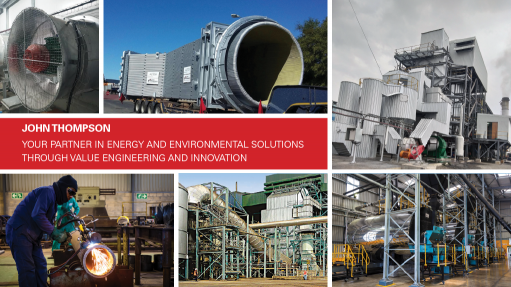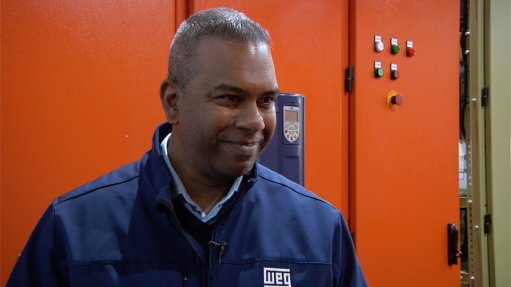Nuclear corporation highlights benefits to South Africa of Multipurpose Reactor project
The South African Nuclear Energy Corporation (Necsa) has highlighted the importance to the country, and indeed the wider world, of the now-authorised programme to construct a new Multipurpose Reactor (MPR). It did so in its statement, issued on Sunday, welcoming the Cabinet’s decision to approve the acquisition and construction of an MPR.
The MPR will be located at Necsa’s complex at Pelindaba, west of Pretoria, and will replace the State-owned entity’s current 20 MW SAFARI-1 research reactor, which first became operational in 1965. “Cabinet approval of [the] SAFARI-1 replacement is a major milestone for South Africa, the continent and the whole world,” affirmed Necsa Group CE Loyiso Tyabashe.
Like SAFARI-1, the future MPR will be used both for the production of medical radioisotopes and for research. SAFARI-1 currently produces ‘active pharmaceutical ingredients’ such as molybdenum-99, iodine-131 and lutetium-177. Most of these are exported and employed as input materials into a range of radiopharmaceutical products. But they are also used to make such products in South Africa. These products, in turn, are used at home and abroad to diagnose serious illnesses and treat cancers.
“The realisation of the MPR project will ensure [South Africa] remains amongst the top four global radioisotopes producers as well as ensuring continuation of research and development on nuclear technology,” he highlighted. “This places Necsa on a path to provide much needed radioactive isotopes for medical and industrial applications, execution of research through beam lines, and jobs which are essential for our economy.”
The new MPR will expand the range of medical radioisotopes that Necsa’s wholly-owned subsidiary, NTP Radioisotopes, will be able to produce. These will include ‘short-range’ radioisotopes that would be conveyed to tumour cells by smart delivery systems, radiating the tumour cell by cell, without harming the surrounding healthy tissue.
National nuclear-related scientific and technological research and development capabilities will also be significantly boosted, because the MPR project will include the creation of a Neutron Beam Line Centre (NBLC), which will source neutron beams from the reactor and direct them along ‘beam lines’ to various research ‘targets’. The MPR’s capabilities will include a ‘cold neutron’ source (long wavelength neutrons with very low energies). This will be the first cold neutron source in Africa. These capabilities will also benefit the agricultural, industrial, mining and power generation industries, among others, and assist research in fields such as forensics and the geosciences. They will also facilitate education and training at the country’s universities and other institutions, and within industry.
“The MPR project is expected to have significant social, economic and environmental benefits for the country,” assured Necsa board chairperson Dave Nicholls. “[A] substantial portion of products will be sourced locally during the MPR construction [and] thus boost the local and national economy. There will be some 5 000 direct and 26 000 indirect jobs created during construction. The nuclear reactor will provide employment to about 750 full-time employees and [an] additional 3 800 indirect jobs for its operation and fulfilment of its research mandate at the NBLC during its operational lifetime.”
Comments
Press Office
Announcements
What's On
Subscribe to improve your user experience...
Option 1 (equivalent of R125 a month):
Receive a weekly copy of Creamer Media's Engineering News & Mining Weekly magazine
(print copy for those in South Africa and e-magazine for those outside of South Africa)
Receive daily email newsletters
Access to full search results
Access archive of magazine back copies
Access to Projects in Progress
Access to ONE Research Report of your choice in PDF format
Option 2 (equivalent of R375 a month):
All benefits from Option 1
PLUS
Access to Creamer Media's Research Channel Africa for ALL Research Reports, in PDF format, on various industrial and mining sectors
including Electricity; Water; Energy Transition; Hydrogen; Roads, Rail and Ports; Coal; Gold; Platinum; Battery Metals; etc.
Already a subscriber?
Forgotten your password?
Receive weekly copy of Creamer Media's Engineering News & Mining Weekly magazine (print copy for those in South Africa and e-magazine for those outside of South Africa)
➕
Recieve daily email newsletters
➕
Access to full search results
➕
Access archive of magazine back copies
➕
Access to Projects in Progress
➕
Access to ONE Research Report of your choice in PDF format
RESEARCH CHANNEL AFRICA
R4500 (equivalent of R375 a month)
SUBSCRIBEAll benefits from Option 1
➕
Access to Creamer Media's Research Channel Africa for ALL Research Reports on various industrial and mining sectors, in PDF format, including on:
Electricity
➕
Water
➕
Energy Transition
➕
Hydrogen
➕
Roads, Rail and Ports
➕
Coal
➕
Gold
➕
Platinum
➕
Battery Metals
➕
etc.
Receive all benefits from Option 1 or Option 2 delivered to numerous people at your company
➕
Multiple User names and Passwords for simultaneous log-ins
➕
Intranet integration access to all in your organisation


















